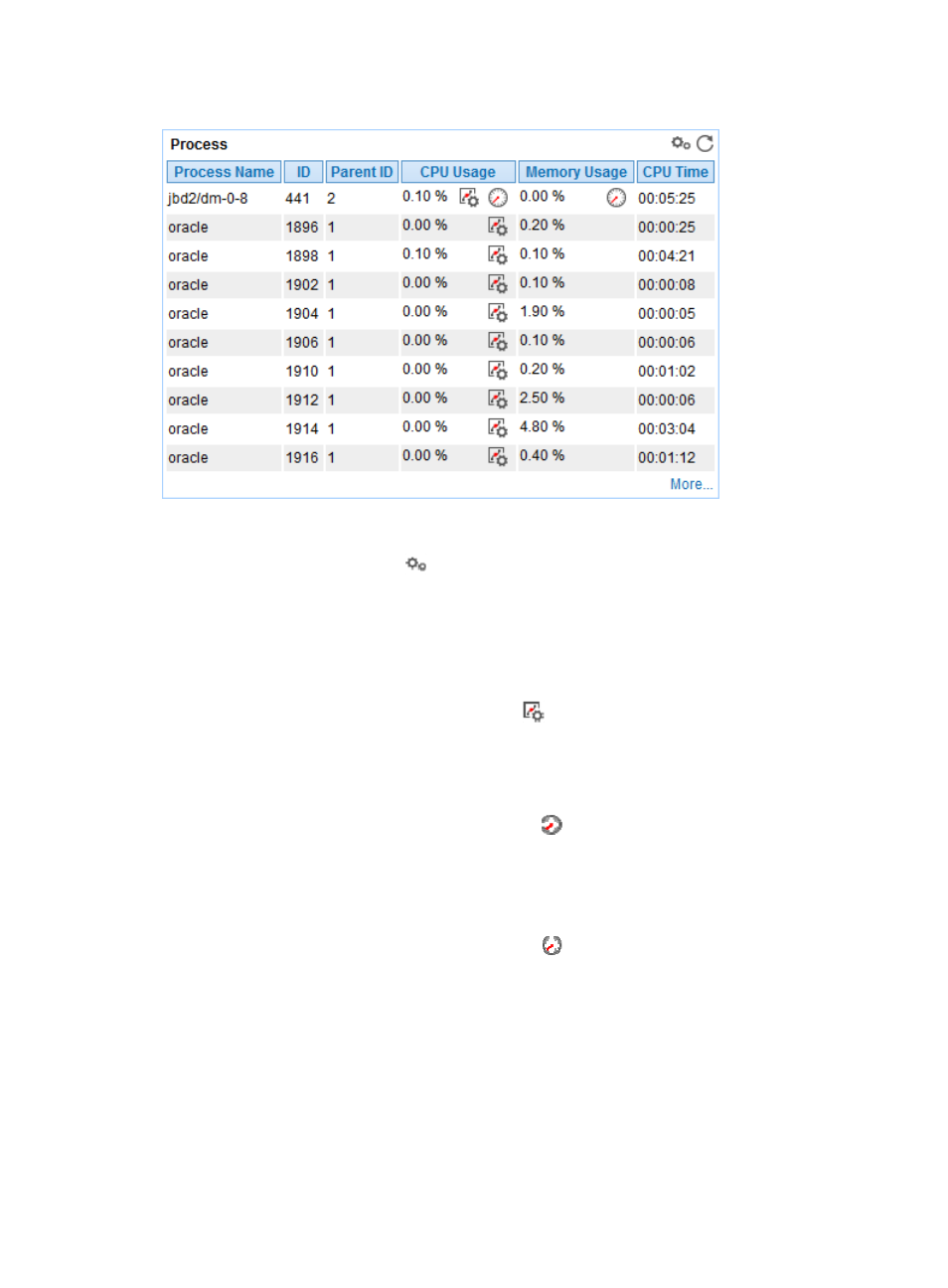I/o state, Figure 176 – H3C Technologies H3C Intelligent Management Center User Manual
Page 239

225
Figure 176 Process area layout
Process area fields:
•
Config—Click the Config icon
to select processes to be monitored in the monitor list window.
•
Process Name—Name of the monitored process. For processes with the same name but different
process IDs (also known as PIDs), APM collects the CPU usage ratio and the memory usage ratio for
each process. For example, Apache may generate a lot of httpd processes, and APM collects the
CPU usage ratio and the memory usage ratio for each httpd process selected.
•
CPU Usage—CPU usage ratio of the process in the last APM polling period.
{
Set Threshold—Click the Set Threshold icon
to set alarm thresholds for the Linux process
CPU usage ratio. The data is highlighted in orange when the CPU usage ratio reaches the
level-1 threshold, and is highlighted in red when the CPU usage ratio reaches the level-2
threshold. Use the global thresholds or custom thresholds. For information about setting the
thresholds, see "
{
History Record—Click the History Record icon
to view the history graph of the CPU usage
ratio trend. Point to a spot on the curve to view the data at the specific time point. Operators can
view the CPU usage ratio statistics over the last 1 hour, last 6 hours, today, yesterday, this week,
this month, and this year by clicking the corresponding icons.
•
Memory Usage—Memory usage ratio of the process in the last APM polling period.
{
History Record—Click the History Record icon
to view the history graph of the memory
usage ratio trend. Point to a spot on the curve to view the data at the specific time point.
Authorized users can view the memory usage ratio statistics over the last 1 hour, last 6 hours,
today, yesterday, this week, this month, and this year by clicking the corresponding icons.
•
More—Click More to view the CPU usage ratio and the memory usage ratio for processes with the
same name.
I/O State
APM can monitor the I/O status of disks, partitions, or logical volumes in Linux. The I/O State area layout
is shown in
